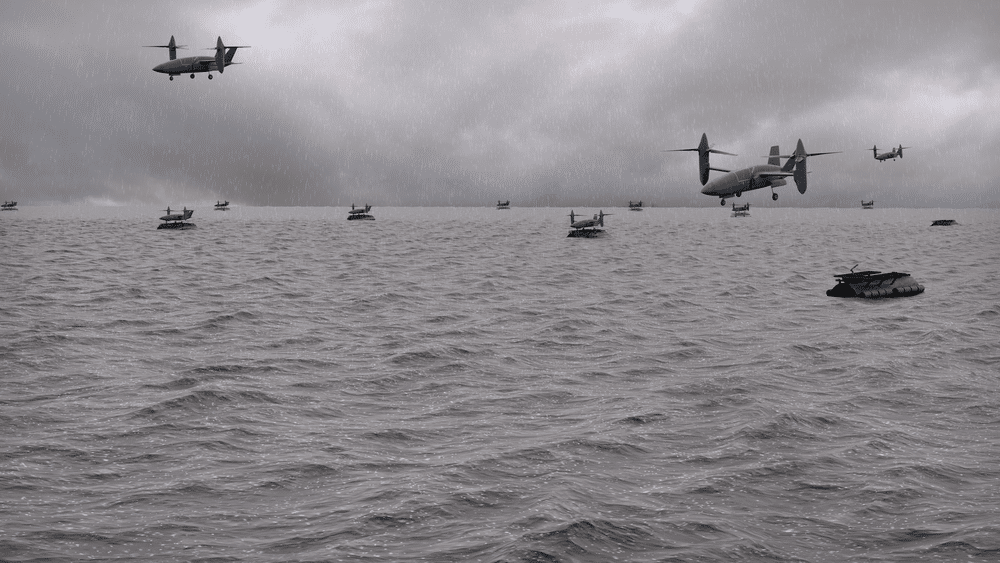Aerospace
Bell and Pratt & Whitney to Collaborate on High-Speed VTOL Propulsion Technology

As industry partners interested in accelerating the future potential of High-Speed Vertical Takeoff and Landing (HSVTOL)technology, Bell and Pratt & Whitney are collaborating on propulsion solutions for the development of HSVTOL technology.
Pratt & Whitney Canada Marks One Billion Flying Hours(Opens in a new browser tab)
Bell continues to work with the U.S. government and its industry partners to reduce risk and develop capability requirements. As Bell continues to build its strong team, we’re having open discussions and collaborating with industry thought leaders, including Pratt & Whitney, to rapidly deliver HSVTOL capabilities to the warfighter.
“We’re excited to dig into HSVTOL propulsion technology research with Bell and showcase what this next-generation capability could bring to USAF and other warfighters,” said Dr. Steven Burd, Director and Chief Engineer of Advanced Military Engine Programs, Pratt & Whitney.
Bell is actively developing innovative vertical lift technologies including the HSVTOL family of vehicles. HSVTOL provides next-generation capability in vertical lift speed, range, and survivability. This type of technology blends the maneuverability of a helicopter with the speed, range and survivability features of a fighter aircraft. Bell’s HSVTOL technology may serve a variety of complex missions in the future battlespace for runway independent agile mobility, SOF infil/exfil, personnel recovery, and Strike/ISR.
“HSVTOL propulsion technology is one of the key technical areas to develop for future capability, and we’re thrilled to leverage expertise from Pratt & Whitney to explore ways to mature technology for these concepts,” said Lee Anderson, Director of Innovation, Bell.
HSVTOL technology leverages existing Bell experience with the development of high-speed vertical lift aircraft, with the Bell 360 Invictus dashing over 200 knots, and the Bell V-280 Valor cruising to over 300 knots. HSVTOL development unlocks next-generation capability for speed, range, and survivability. HSVTOL’s runway flexibility provides the capability to utilize runways with conventional jet takeoff when runways are intact and independence with short field takeoff and vertical takeoff when runways are compromised

Aerospace
When Ratan Tata was denied entry to the airfield at the Aero India show, he waited

During our visit to Aero India 2019, we had the unexpected opportunity to see Ratan Tata at the event, which was a thrilling moment for us. However, there was a surprising hiccup when the security staff didn’t allow him to enter due to a lack of a security pass.
Despite this, he remained calm and patiently waited for about 20 minutes until a member of the Tata team brought him the required pass, after which he calmly proceeded inside. It was a humbling sight, showcasing his composed demeanor even in such situations.
Ratan Tata ji is not only a renowned industrialist but also a trained pilot, holding a pilot’s license. In 2007, he became the first Indian civilian to fly the F-16 Falcon during the Aero India show in Bangalore—a proud moment for the nation.
His passion for aviation extended beyond flying, as he played a key role in shaping India’s aerospace industry. Under his leadership, Tata ventured into manufacturing and maintaining aerospace components while upholding its legacy of quality. Notably, Tata’s collaboration with Airbus to develop and manufacture the C295 aircraft is a testament to its growing influence in the sector.
-

 Aviation2 months ago
Aviation2 months agoMicrosoft Flight Simulator Raises $3 Million to Bring Back the An-225 Mriya
-

 Airlines2 months ago
Airlines2 months agoQantas Engineers Stage Walkout Over Cost of Living Concerns
-

 Airlines2 months ago
Airlines2 months agoQatar Citizens Can Travel to the United States Without a Visa
-

 Aviation2 months ago
Aviation2 months agoQatar Airways bans these new Electronic Devices on plane
-

 Airlines2 months ago
Airlines2 months agoJapan Airlines Rolls Out Free Domestic Flights to International Passengers
-

 Defence2 months ago
Defence2 months agoWhich Country Has the Largest Fleet of Fighter Aircraft?
-

 Airport2 months ago
Airport2 months agoWestern Sydney Airport Welcomes Its First Plane After 6 Years of construction
-

 Travel2 months ago
Travel2 months agoQatar Airways Launches Four Additional Flights from Amsterdam








